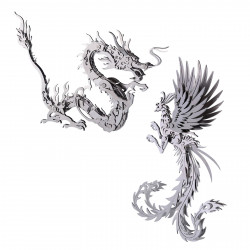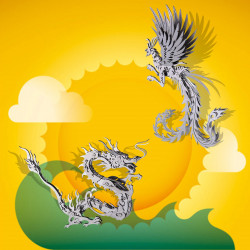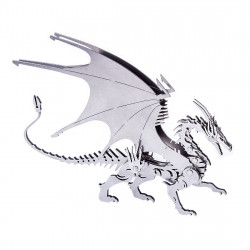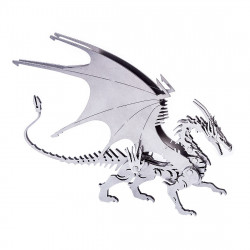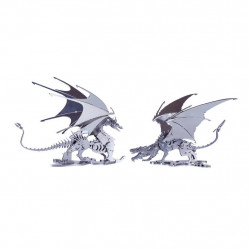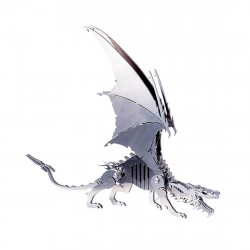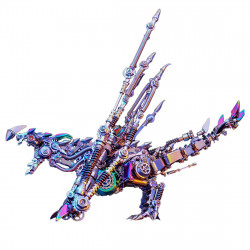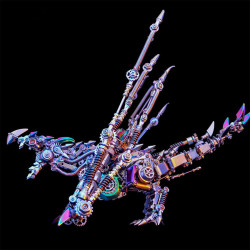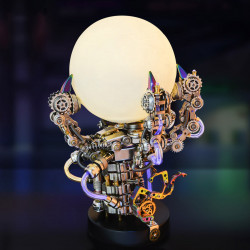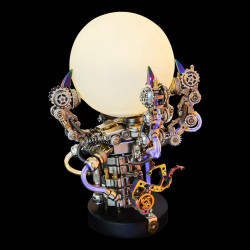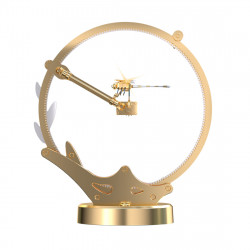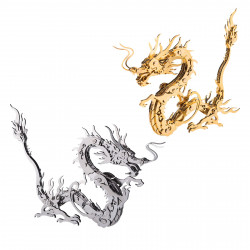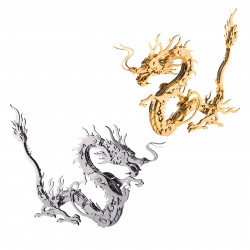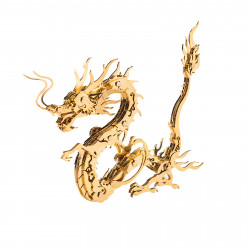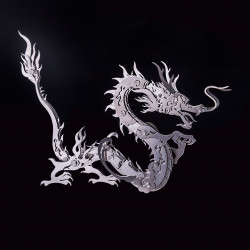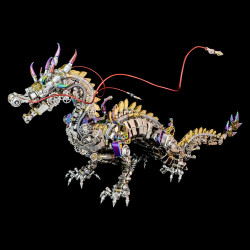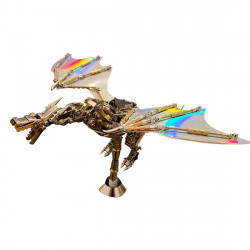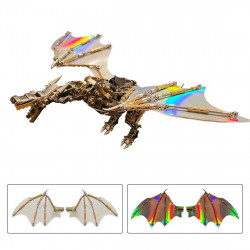Dragon Lovers
Types of Dragons You Might Want to Know
European Dragon:
The most well-known dragons worldwide are those found in Europe. Typically, they are shown as enormous, fanciful animals with tails, long necks, and wings. Some of them breathe fire, and they frequently have horns and scales. This kind of dragon usually has a massive head with horns, a beard, sharp teeth, and a long, scaly body traditionally colored green, red, or black. Though it is commonly portrayed as having the ability to spew fire, it is also capable of causing other natural calamities like storms and floods. European dragons are thought to have magical skills and are typically clever and knowledgeable. They are also frequently connected to immense riches and fortune.
Chinese Dragons:
Chinese dragons are revered and powerful animals. They are frequently portrayed as big, snake-like animals with four legs, claws, horns, whiskers, and long beards on their lengthy, scaly bodies. Chinese dragons are frequently connected to monarchy and the natural world and are thought to be divine. They are commonly portrayed as kind beings who bestow money, luck, and fortune upon others. They are also often viewed as alpha dragons who rule over other dragons. Chinese dragons are frequently connected to water and are viewed as symbols of strength and power. In addition to being thought to be able to regulate the weather, they are renowned for bringing luck and wealth.
Wyvern Dragon:
Wyverns resemble dragons and usually have two legs, a long, serpentine body, and wings. They are frequently connected to protection and strength. Wyverns are generally significantly smaller than other dragon species and are commonly shown as emblems of strength and might in battle.
They are frequently observed manning castles and other significant sites. They are typically connected to protection and strength.
Wyrm Dragon:
The fabled Wyrm Dragon is supposed to live in numerous distinct places. It is a giant, strong dragon with strength and size that are supposedly unrivaled. It is reportedly multilingual and has a powerful, deep voice.
The Wyrm Dragon is described as having a long, sinuous body, enormous wings, and keen claws. Its eyes are described as blazing a golden-red, and its scales as deep and glossy black. Its lengthy tail is reported to be equipped with a deadly spike, and its head is thought to be crowned with a long, curving horn.
It is stated that the Wyrm Dragon possesses enormous power, enough to cause storms, alter the tides, and control the weather. Its scales are reported to be as challenging as steel, and it is said to be able to breathe fire. It is also believed to have the ability to take over the minds of people who approach it too closely and force them to follow its instructions.
There are rumors that the Wyrm Dragon ferociously protects an enormous treasure hoard. It is claimed never to sleep and that people who do not obey it will face disaster. Offerings of gold and valuable stones are said to be necessary to satisfy it.
It is stated that the Wyrm Dragon is an isolated being that is never observed with other dragons. It is also supposed to be extremely bright and capable of speaking with people. It is claimed to have the ability to comprehend and control human emotions.
Lindworm Dragon
One kind of European dragon that is common in German and Scandinavian folklore is the Lindworm Dragon. It is a giant, two-legged dragon that resembles a serpent and is frequently portrayed as being either green or black in hue. The Lindworm may have wings in certain situations, although this is not usually true.
Generally speaking, this kind of dragon is very long, snake-like, and has two or four legs. Although some legends describe the Lindworm as having enormous, clawed hands, it may have short arms. Generally speaking, the head is described as small, flat, and devoid of horns or other distinctive characteristics.
Known for their violent and insatiable appetites, lindworms are sometimes portrayed as consuming sheep, cattle, and even people. It is also renowned for being able to breathe fire and wreak havoc. Although the Lindworm is frequently characterized as being almost unkillable, it is reportedly capable of being eliminated by a single hero or heroine in certain situations.
Due to its power, the lindworm is typically connected to evil or malevolent powers and is frequently viewed as the personification of chaos and devastation. The Lindworm is sometimes regarded as a lucky or prosperous emblem.
Amphitheater Dragon
One fabled creature that is thought to live in the seas and oceans is the Amphitheater Dragon. It is claimed to be able to fly and has a serpentine body. Four wings are mentioned, two of which are finned and two of which are feathered. Its head is thought to resemble that of a dragon, and it has a long, slender tail. It is supposed to have dazzling, iridescent scales.
A scarce and exceptional species of dragon is the Amphitheater Dragon. It is one of the few species of dragon that can travel through the air only on the strength of their serpentine body, without the need for wings. Their long, slender bodies and the unique membranes running along their sides give them the ability to glide through the air like a sea snake. Not only can they fly, but they are the only known species of dragon that can breathe air, which is a fantastic talent. They can travel greater distances and stay afloat for more extended periods than any other species of dragon. They have a distinct advantage in nature since they can hunt for food in the air and the water and traverse through water. Their particular set of skills sets them apart from other dragon species.
The Amphitheater Dragon is thought to symbolize the overwhelming powers of the sea and is seen as a symbol of strength and power. It is revered as the guardian and defender of the sea and all its creatures. Those who come across it are said to benefit from good luck and wealth.
Drake Dragon
A drake is commonly portrayed as a tiny, winged monster with a long, serpentine body that resembles a dragon. They are usually shown as having sharp fangs and claws, and as being swift and nimble. Certain Drake varieties might be able to breathe fire or possess other magical abilities. Drakes are typically portrayed as having shimmering scales, frequently with red, blue, or green hues. Additionally, they could have long, flowing spines or manes that go down their backs.
Draco dragons are the most powerful and rare of all the dragon species. They have a significantly deeper grasp of strategy and tactics than other dragons, which further establishes their reputation for intelligence and wisdom. In addition to their fierce defense of their homes and belongings, draconic dragons are also renowned for their willingness to repel invaders with the force of their superhuman strength and might.
In Dungeons & Dragons, Drake dragons have gained popularity and are a player favorite. Because of their money, wisdom, and excellent skills, they are highly sought after and are notoriously hard to defeat in battle. Drake Dragons are also renowned for being honorable and intelligent beings, and many explorers turn to them for assistance when they are in need.
Fire Dragon
Many people consider fire dragons to be the most formidable and terrifying kind of dragons. Their scales are often bright red or orange and extremely hot to the touch, and they can breathe fire. Fire dragons are typically found in warmer climates and are commonly thought of as fierce warriors. Fire dragons are fiercely protective of their homes and are highly territorial. Some magical skills, including shape-shifting or spell-casting, have been reported for them.
Ice Dragon
The antithesis of Fire Dragons, Ice Dragons are typically found in colder regions. These dragons are often rather huge, with scales ranging in color from light blue to deep purple. Breathing chilly, icy blasts of air is a skill of Ice Dragons. They are often calm, but if they feel threatened, they may become highly hostile. Because of their reputation as smart and wise beings, ice dragons are frequently sought after for their counsel.
Earth Dragon
One of the most prevalent kinds of dragons are earth dragons. Their scales are often brown or green in color, and they are typically found in mountains and woods. Earth dragons are capable of digging through the ground and causing earthquakes. They are regarded as wise and are frequently seen as guardians of the natural world.
Dragon Symbolism : Western Dragon VS Eastern Dragon
Dragons are among the most ancient mythical animals, regardless of their location in the East or the West! Dragons will be prevalent in both Eastern and Western literature, architecture, and interior design. But dragons from the east and the west are very different from one another!
According to legend, Western dragons are just as strong as Eastern dragons in terms of power and magic, and they come in a variety of forms with extensive family units.
Discover the true meaning and origin of the term "Western Dragon"!
But people's perspectives on eastern and western dragons are entirely different because of divergent historical events and cultural beliefs! What therefore distinguishes Eastern and Western dragons from one another?
variation in appearance
The contrast in appearance makes the most sense. The Eastern Dragon, the head of the scale insects, is a divinity in Chinese mythology and folklore. It also has a remarkably lovely and enigmatic aspect.
"The dragon has nine shapes; its head is like a cow, its horns are like a deer, its eyes are like a shrimp, its ears are like an elephant, its neck is like a snake, its scales are like a fish, its claws are like a phoenix, and its palms are like a phoenix," wrote Wang Fu of the Eastern Han Dynasty. Its voice is like a copper plate, it has reverse scales under its throat, reverse scales under its chin, Boshan on its head, and eighty-one scales on its back, just like a tiger. Fire can emerge from water.
Western dragons have scales covering their bodies, a long, thick neck, frilled or horned heads, keen fangs, and a long tail. They resemble enormous lizards with bat-like wings.
The western dragon is a formidable creature with a strong body and magical abilities. It can fly with two enormous wings that resemble bat wings, and it can walk on four strong feet. The mouth has the ability to shoot hot flames that are extremely harmful!
Variations in the dates of origin
While the idea of the Western Dragon emerged in Western mythologies approximately 4,000 years ago, the Eastern Dragon's origins may be traced back to the Neolithic Age, more than 8,000 years ago.
The first recorded dragons in Greek mythology were the giants with dragon heads that battled Zeus, the god ruler. The sky deity Uranus and the earth goddess Gaia gave birth to these giants in the shape of dragons. Their visage is fierce, their hair and beard are disheveled, and they trail a scaly tail. Western dragons are sometimes referred to be magic dragons because they have caused countless tragedies for humans.
The myth of Greek dragons has spread throughout Europe as a result of the ancient Greek civilization's significant influence on the West. But beginning in the second century A.D., the perception of European dragons started to shift significantly: Western dragons were no longer just deadly, but also fire-breathing, fierce, money-hungry, and nasty.
The dragon that guards the riches in the European national epic "Beowup" is the poisonous one. It is a strong image of a monster, and it is very bloody and fierce. Then, when Christianity grew, the Bible's depiction of dragons altered people's perceptions of them in the West once more. According to a biblical tale, Satan once took on the appearance of a large red dragon, whose tail covered a third of the stars. With seven crown-adorned heads, the large red dragon ate newborns with a voracious appetite. Thus far, the western dragon From miser to Satan's embodiment!
Reinterpreted as the embodiment of malevolence, craft, and brutality. The fundamental image of the western dragon is derived from this image.
Naturally, there are a lot of dragon slayers in the west and a lot of dragon hunters in the east. And defeating the dragon used to be the ultimate compliment for brave people and heroes.
As a matter of fact, China revered the "dragon" due to its eventual entanglement with the imperial state. In regards to it becoming a national symbol of China, this occurred subsequent to the emergence of contemporary nationalism.
Furthermore, not all Western dragons are malevolent. In Celtic mythology, for instance, King Fotigang discovered a red and a white dragon after following the wizard's instructions and digging up the lake and draining the water. The two dragons awoke at this point and started fighting. The red dragon eventually overcame the white dragon by fighting back, even though the white dragon had the upper hand at first. According to Merlin, the Saxon people is represented by the white dragon, whereas the Anglo nation, or King Vertigan's subjects, are represented by the red dragon. The Saxon country will first invade the Anglo nation, which will then repel the invasion with bloodshed and drive the Saxons away.
Furthermore, following the Tudor dynasty's Henry VII, the red dragon came to represent him, was included into flags and coats of arms, and eventually came to represent Wales.
The Welsh flag's crimson dragon, unmistakably a representation of the sublime
Lastly, there are mythical animals in Slavic mythology that resemble dragons in Greco-Roman and Christian culture. Dragon imagery in the southern regions—Bulgaria, Croatia, Macedonia, Serbia, Bosnia and Herzegovina—is classified into two categories. A dragon with a distinct image from the one in Russian tradition but the same name. Usually a man with superhuman wealth, intellect, and understanding. Huge and powerful, adept at magic, and incredibly avaricious for the beauty of human women, it is. They can procreate with human women and are skilled at courting them. As a result, this type of dragon is frequently revered, and in folklore, numerous national heroes are portrayed as dragons or their offspring.
In summary:
To put it another way, dragons, whether they be Chinese or Western, are a very diverse bunch that cannot be reduced to simple good or evil. The word "dragon" in English is derived from the ancient Greek word δρκωvdrákōn, which means "giant snake".
Several legendary influences have resulted in the presence of dragons in European culture.
To be honest, seeing this kind of issue leaves me speechless. These books that are marketed as "popular science" are essentially absurd. Considering that Chinese dragons and Western dragons are completely unrelated. Why? Everyone should carefully consider this. There is no issue if we claim that although there are snakes in China and Europe, the species of snakes are entirely different, as biology can support.
However, the dragon is merely a mythical creature. various places have various legends. These legends don't matter at all. The dragon is a product of numerous influences in European culture. The vivid picture of dragons in European culture was first brought about by Nordic mythology, Celtic culture, and Anglo-Saxon traditions, which came before Greek, Babylonian, and even Christian mythology. Greek mythology had an influence on the dragon's representation of evil, since it is the guardian of the riches and a symbol of destruction and greed.
The reason this animal is also referred to as a "dragon" in Western legends is solely a result of translation. It might be argued that the translation of "dragon" into dragon was not very good, and there are still a lot of disagreements. Because Chinese and Western "dragons" are entirely different kinds of mythical beasts, there is no tie between them.
But there's another similarity between Chinese and Western dragons: both are human inventions based on real-world animals.
People's imaginations of dragons are based on mythical animals that resemble lizards and snakes.
A proverb goes, "Gods did not create humans in their own images, but humans created Gods in their own images." Every fantasy has a grounded reality, and people cannot conjure up an animal out of thin air.
And dragons are just that—huge, legendary animals with lizard and snake-like traits. But mythical beings modeled on these creatures have been created in both the East and the West, not because they are related to one another, but rather because of "coincidence".
Humans share several characteristics. For instance, "unicorns" (Xiezhi, or xiè zhì in Chinese legend) are myths associated with both the East and the West and are also representations of power and integrity. The horn of a "beast" was considered a symbol of power among ancient humans, and people generally worshiped some form of power, which could be the origin of this circumstance.
The topic then ought to be rephrased as follows: Why do the East and the West have opposite symbolic interpretations of the "mythical creatures with the characteristics of snakes and lizards"?
The question of whether the western and Chinese dragon symbols truly represent "one good and one evil" will be discussed next.
Western dragons are not always wicked, and Chinese dragons do not always symbolize holiness.
Actually, there is a miscommunication here as well. Has the "noble" and "sacred" Chinese dragon always been a symbol? Not necessarily; the stories of "Monkey King making troubles in the Dragon Palace" and "Nezha making troubles in the sea" are at least familiar to everyone. In this case, although though "Dragon King" is not a villain, he is not entirely holy because Nezha and Monkey King are not evil people. Nonetheless, there are numerous accounts of dragons being humiliated, fighting, and dying in old Chinese classics, myths, and legends.
